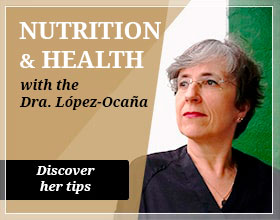We must differentiate Total Energy Expenditure from Basal Metabolism.
The first, as its name indicates, is the total energy expenditure of the body and will depend on several factors (age, sex, etc.) and, among them, is the Basal Metabolism.
- Basal Metabolism is defined as the amount of Energy needed to maintain vital processes while at rest and fasting for 12 hours and represents between 50 and 70% of total spending.
- Endogenous thermogenesis, as the ability to generate heat in the body due to metabolic reactions and
- Physical activity, this is the factor with the greatest variability.
After this rather brief definition, how can you increase basal metabolism?
Well, something can be done and we will give some advice.
- Increase physical activity, adapted to the age of the individual (put yourself in the hands of professionals as we always advise), carried out regularly and combining aerobic exercises with strength exercises
- Have a good pattern of sleep,
- Eat when you are hungry
- Incorporate protein into all meals of the day (fish, eggs, soybeans and derivatives, legumes, meat),
- Provide the Iron that is in foods such as cockles, mussels, spinach, chard, broccoli, red meat (as a tip, no more than once a week), beets, pistachios,
- Provide Vitamin B, especially B12, which is found in foods of animal origin, fish, eggs and meat; remember that vegans and vegetarians must make a contribution of these vitamins,
- Vitamin D (from the sun) present in oily fish that could be canned like Serrats’s (white tuna, yellowfin tuna, sardines, anchovies), eggs, dairy products and fortified foods
- You can incorporate spicy foods-spices that seem to increase basal metabolism such as cinnamon, cayenne and ginger.








 Send us your recipe and win a fish preserved box
Send us your recipe and win a fish preserved box



